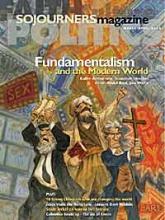In light of the 9-11 wars, people worldwide are digging more deeply into the study of applied nonviolence. Here are two new books to add to the curriculum. Dylan Mathews, coordinator of the Oxford Research Group's conflict prevention initiative, spent the last year researching 50 case histories of conflicts or potential conflictsprimarily from the 1990sthat have been successfully resolved through nonviolence. The purpose of the research is to raise awareness of the extraordinary cost-effectiveness of those working nonviolently at the front line of conflict.
Here's a snapshot: In December 1992, an extremist Hindu group in northern India attacked a 400-year-old mosque and tore it apart stone by stone, launching riots that left more than 3,000 dead. Before the violence spread to the nearby city of Lucknow, the Lucknow City Montessori Schools convened meetings of religious leaders for prayer and discernment. At the same time, CSM students took to the streets. Hiring a number of jeeps with loudspeakers, they appealed directly to the people of the city to refrain from violence. For less than $5,000, the children of Lucknow prevented anti-Muslim violence that swept the rest of the region. I urge you to read the other 49 examples.
For an in-depth look at Kosovo as a case study in nonviolent civil resistance, there is no better book than Howard Clark's Civil Resistance in Kosovo. Clark is former executive secretary of War Resisters International and co-founder of the Balkan Peacemaking Teams.
Read the Full Article
